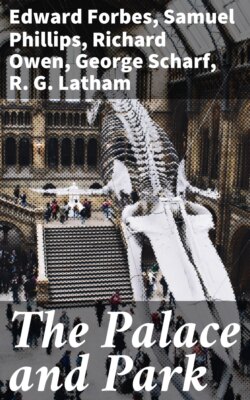Читать книгу The Palace and Park - Edward Winslow Forbes - Страница 34
На сайте Литреса книга снята с продажи.
THE GREAT CENTRAL TRANSEPT.
ОглавлениеPassing along in front of the Reading Room, we return to the Nave, and enter the Transept, the arch of which rises nearly 175 feet high in a light and graceful span. From the first terrace, however, to the summit of the Transept is 197 feet 10 inches. There are five galleries here, one above the other, the topmost of which runs entirely round the Transept, and the third of which extends round the whole length of the building on each side. In the second of these galleries, on the garden side, is the Industrial Museum and Technological Collection, of which we shall treat presently.
Not far from the angle of the Transept and Nave, towards the Stationery Court, stands a cast from the colossal statue of Rubens, by Geefs, of Brussels, erected in the cathedral square at Antwerp, of which city Rubens was a native: the original is in bronze, and a fine example of the modern Romantic school of sculpture. Opposite the statue of Rubens, on the other side of the Nave, is placed a cast of the fine bronze statue, by Dantan, which has been erected at Dieppe, in honour of the great French Admiral Duquesne. It is remarkable for its noble expression, and the spirited romance of its treatment. The celebrated Farnese Hercules and the Farnese Flora, both colossal antique statues from the Museum at Naples, occupy the corresponding positions across the Transept. The Hercules is a fine and artistic example, characterised by a massive and somewhat exaggerated muscular development, not, however, altogether inappropriate to the hero of physical force. The whole of this the western end of the Great Transept is occupied by the great orchestra, capable of accommodating 4,000 performers, which has been erected for the Great Handel Festival. In the centre of the orchestra is the great organ which has been built by Messrs. Gray and Davison expressly for the position.[26] The eastern end of the Transept is occupied by a handsome orchestra for musical and choral performances. On the northern side of this end of the Great Transept are ranged some choice statues of the modern schools; the graceful Amalthæa by Julien (113); Psyche (103*); Veritas (150), a veiled figure by Monti; and Endymion (129), the Graces (125), and Paris (129), by the late famous sculptor Canova.
